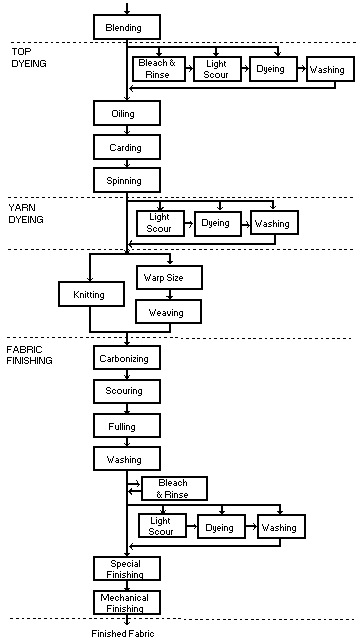This category of the textile mill includes wool finishing along with processes such as carbonizing, fulling, bleaching, dyeing, rinsing, fire proofing, etc. This category is differentiated from other fabric finishing categories by the wide variety of chemicals used to process wool fabrics. These operations generate a high effluent load including toxic pollutants such as chromium and phenols. The wool finishing process is shown in figure 3. The three distinct finishing processes shown in this diagram are stock, yarn and fabric finishing. Waste generated by the fabric finishing operation is similar to that generated by all three, therefore only this process will be described. If the greige goods are 100% wool, then they are first cleaned to remove vegetable matter by carbonizing. Later, spinning oils and any weaving sizes are removed with the use of a light scour. The fabric is then dyed, in batches, in vessels called becks, washed and then taken to dry finishing operations [10].
